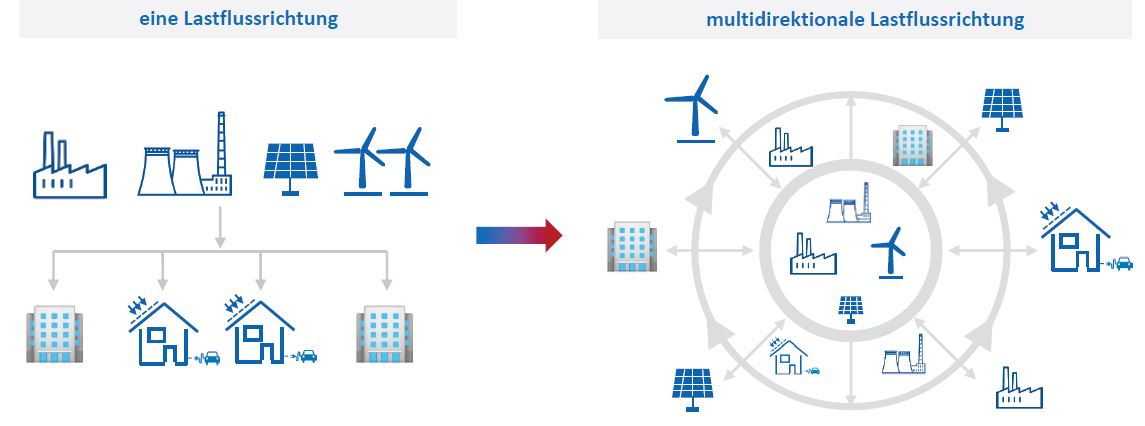The project ‘Cellular energy systems for the reorganisation of energy supply in suburban areas’ aims to develop a feasibility study on the reorganisation of the energy system in rural areas towards a cellular energy supply system.
The focus here is on peripheral urban areas (suburban areas that are not part of a centralised heating and cooling supply), which in future will increasingly interact with a core area, the city, in terms of energy (using Hoyerswerda as an example). This will be further intensified by population growth and the associated demand for living space in the peripheral areas of a city, as well as the additional need for the greenest possible mobility to the core area The region around Hoyerswerda will be considered as an example. The feasibility study is to be designed in such a way that a high degree of scalability and transferability to other regions in Saxony and throughout Germany can be achieved. Hoyerswerda is currently supplied by a centralised heat supply from the Schwarze Pumpe power plant. This supply will be discontinued with the end of coal production, by 2038 at the latest. Versorgungsbetriebe Hoyerswerda is currently developing a concept for the transformation of the urban heat supply, focussing on the replacement of the Schwarze Pumpe power plant capacity. This does not address the suburban areas around Hoyerswerda. The project should therefore focus on those areas in and around Hoyerswerda where no district heating is available or where there is a structural change (e.g. addition of industry, increase or decrease in population) that significantly changes the requirements for the district heating supply. To support the urban district heating system, a flexible cellular energy system is to be established that integrally combines the gas, heat and electricity sectors. The following figure illustrates sector coupling and the digital networking required for this.

Fig.: Forecast for the change in the structure of the energy system, source: [1]
The energy transition is leading to fundamental changes in the German energy landscape. Instead of centralised, controllable large-scale power plants (nuclear, gas and coal-fired power plants), an increasing number of decentralised plants (PV systems, wind turbines, biogas plants) are feeding their electricity into the German power grid. This is creating new requirements on the supply and demand side. Particularly in the residential building sector, self-generation is transforming the previous consumption (‘consumer’) into an energy producer (‘prosumer’), whereby the usual load behaviour (mapped as a standard load profile) is increasingly changing and being replaced by individualised demand profiles. On the supply side, the residual load is becoming the determining factor for conventional generators. As a result of decentralised feed-in, the electricity grid is being increasingly overloaded and renewable energy sources are increasingly being curtailed in order to ensure grid stability.
Initial situation:
Objective:
Measures:
As a result, the central energy system is transformed into a cellular energy system.
[1]:J.Seifert/P.Schegner: Zellulare Energiesysteme, Grundlagen, Teilsysteme, Märkte, regulatorische Rahmenbedingungen, Praxisbeispiele; VDE Verlag; ISBN: 978-3-8007-5557-8, Link